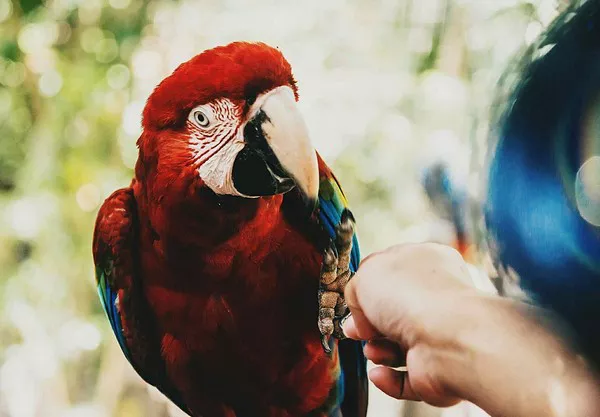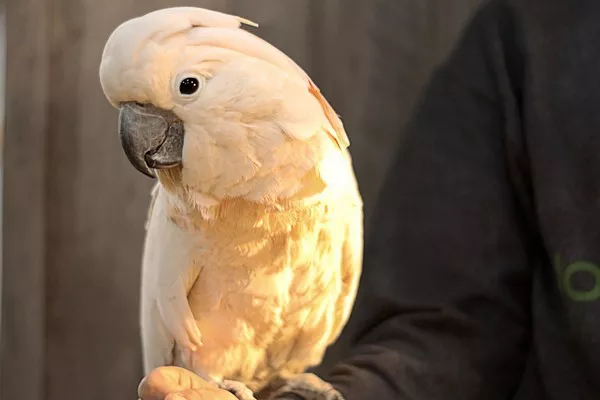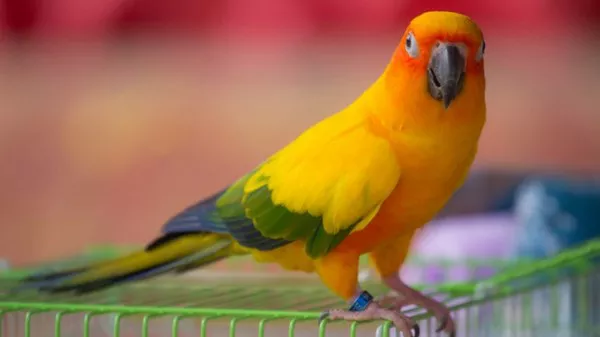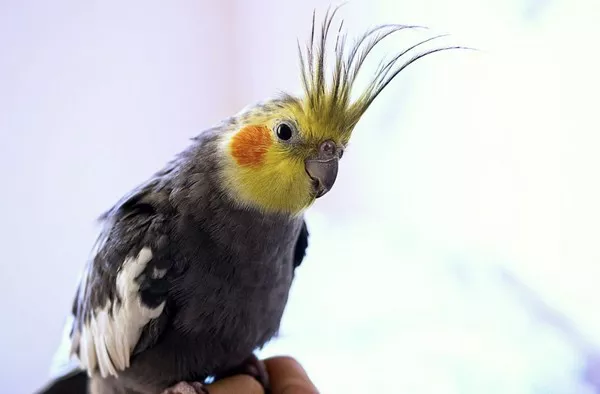Corn snakes (Pantherophis guttatus) are one of the most popular pet snakes worldwide, known for their beautiful patterns, docile temperament, and ease of care. For anyone considering a pet snake, corn snakes are often recommended as a great choice for beginners. But a common question arises among new snake owners: Are corn snakes picky?
In this article, we’ll explore the nature of corn snakes, focusing on their dietary preferences, behavior, and general care requirements. Understanding these factors can help potential owners provide the best care and avoid misunderstandings about these fascinating creatures. By the end, you’ll know whether corn snakes are picky eaters or if their habits are just part of their unique personalities.
What Makes Corn Snakes Special?
Before we dive into the question of whether corn snakes are picky, it’s important to understand what makes them unique. Corn snakes are non-venomous constrictors native to the southeastern United States. They are often found in forests, grasslands, and even agricultural areas, where they play an essential role in controlling rodent populations.
Corn snakes get their name from the pattern on their scales, which resembles the colors of Indian corn (maize). They are known for their relatively calm and docile temperament, making them an ideal choice for snake enthusiasts. Unlike some other snake species, corn snakes are often more active during the day, which makes them fun to watch.
Are Corn Snakes Picky Eaters?
Now, let’s address the main concern—are corn snakes picky eaters?
Generally speaking, corn snakes are not particularly picky about their food. They are opportunistic feeders, meaning they will readily eat whatever food is available in their environment, provided it’s appropriate for their size. In the wild, their diet typically consists of small rodents such as mice, rats, and birds. They might also consume lizards, amphibians, or eggs, depending on availability.
When kept as pets, corn snakes are typically fed a diet of frozen-thawed mice or rats. The food is usually available in pet stores, and owners are advised to feed their snakes appropriately sized prey that fits comfortably in their snake’s mouth. If the prey is too large, the snake may have trouble eating it, and if it is too small, it may not be sufficient for the snake’s nutritional needs.
So, in general, corn snakes are not considered picky eaters. However, a few factors could lead to a corn snake refusing food, which is where the concept of “picky eating” might come into play.
Factors That Affect Feeding Habits
Several factors can influence whether a corn snake will eat consistently. Understanding these factors can help owners provide a better feeding experience and avoid frustration when a snake refuses food.
1. Temperature
Corn snakes are ectothermic (cold-blooded), meaning their body temperature depends on their surroundings. A snake’s digestion is directly affected by temperature, and if the environment is too cold, the snake may not feel hungry or may be too sluggish to eat. On the other hand, if the temperature is too hot, the snake may become stressed and refuse food.
The ideal temperature for a corn snake’s habitat is between 75°F and 85°F (24°C to 29°C), with a basking spot that can reach up to 88°F (31°C). It’s essential for owners to maintain a proper thermal gradient in the enclosure, allowing the snake to regulate its body temperature by moving between warmer and cooler areas.
2. Feeding Schedule
Corn snakes are usually fed once every 7 to 14 days, depending on their age and size. Baby corn snakes may require more frequent meals, while adult corn snakes can be fed less often. If a snake is fed too frequently or irregularly, it may become accustomed to a particular schedule and refuse food when it’s not hungry.
Consistency in feeding times is key, as corn snakes thrive on a routine. If your snake refuses food at a scheduled time, it may simply not be hungry, or it could be experiencing a temporary issue, like a temperature fluctuation or environmental stress.
3. Shedding Cycle
Snakes undergo a process called ecdysis, or shedding, during which they shed their outer skin. This process can take several days and may lead to a temporary loss of appetite. During shedding, corn snakes may become more irritable or withdrawn, and their feeding habits may change.
Shedding can also make it uncomfortable for the snake to eat, especially if the skin on its head or mouth hasn’t completely shed. During this period, owners may notice that the snake refuses food or eats less often. This is a normal part of the cycle and should resolve once the snake has completed its molt.
4. Stress and Handling
Corn snakes are generally calm and enjoy being handled, but excessive handling can cause stress, particularly in young or newly acquired snakes. A stressed snake may refuse food or become hesitant to interact with its owner. Stressors such as loud noises, too much activity around the enclosure, or inappropriate cage mates can all lead to a decrease in appetite.
When introducing a new corn snake into its enclosure, it’s important to allow it time to adjust. During this adjustment period, limit handling to avoid stressing the snake. Once it feels secure in its new environment, it will likely resume normal feeding behaviors.
5. Health Issues
Like any animal, corn snakes can experience health problems that may affect their appetite. Common issues include internal parasites, respiratory infections, or mouth rot (a bacterial infection). A snake that is sick or in pain may refuse food or show other signs of illness, such as lethargy, labored breathing, or unusual behavior.
If you suspect your corn snake is unwell, it’s important to consult a reptile veterinarian. They can diagnose any underlying health conditions and provide the appropriate treatment.
6. Prey Preferences
Though corn snakes are not generally picky eaters, some individuals may develop specific preferences for the type or size of prey they consume. For example, some corn snakes might prefer smaller mice over larger ones, or they may show a preference for live prey over frozen-thawed options. However, it’s essential to remember that feeding live prey to a snake can be dangerous, as the prey animal might injure the snake.
If your corn snake refuses food, try offering different sizes or types of prey. You can experiment with offering frozen-thawed mice or rats, as some snakes prefer the scent of thawed prey over live food. Always ensure that the prey is appropriately sized—about the width of the snake’s midsection or slightly smaller.
Addressing Common Myths About Corn Snakes and Feeding
There are several myths about corn snakes that may contribute to the idea that they are picky eaters. Let’s take a closer look at some common misconceptions.
Myth 1: Corn Snakes Only Eat Live Prey
While it’s true that wild corn snakes hunt live prey, pet corn snakes can be trained to eat frozen-thawed food, which is much safer for both the snake and the prey. Feeding live animals is not recommended for several reasons, including the risk of injury to the snake from a defensive prey animal. Additionally, frozen-thawed food is more convenient and hygienic for the owner.
Myth 2: Corn Snakes Should Eat Every Day
Some people mistakenly believe that corn snakes should be fed daily, but in reality, adult corn snakes only need to eat once every 7 to 14 days. Overfeeding can lead to obesity, which can cause various health problems. It’s important to follow the proper feeding schedule and adjust based on the snake’s age and size.
Myth 3: Corn Snakes Are Always Hungry
Corn snakes are not always hungry. Like many reptiles, they eat based on their needs, which is typically driven by their size and metabolic rate. Overfeeding can cause health issues, so it’s important to watch for signs of hunger (such as increased activity or seeking food) and feed accordingly.
Myth 4: Corn Snakes Only Eat Mice
While mice and rats are the most common food sources for corn snakes, they may occasionally eat other small animals like lizards or birds in the wild. In captivity, some snake owners offer other prey items such as chicks, quail, or even eggs, but mice and rats remain the preferred food.
Creating the Best Environment for Your Corn Snake
Providing the best possible care for your corn snake will help ensure it has a healthy appetite and an active lifestyle. Here are some tips to create a comfortable and appropriate environment for your corn snake:
Proper Enclosure: Corn snakes require a secure enclosure with adequate ventilation. A 20-gallon tank is usually sufficient for an adult corn snake, while juveniles can be housed in smaller tanks. Make sure the tank has a secure lid to prevent escapes.
Substrate: Use safe and absorbent bedding material like aspen shavings, paper towels, or coconut husk. Avoid using sand or cedar, as they can cause health issues for your snake.
Heating: Provide a heat source such as a heat lamp or heat mat to create a thermal gradient in the enclosure. This allows the snake to regulate its body temperature by moving between warmer and cooler areas.
Humidity: Corn snakes prefer moderate humidity levels. Aim for 40-60% humidity, and monitor the humidity using a hygrometer. Too much moisture can lead to mold or respiratory issues, while too little can cause shedding problems.
Hiding Spots: Corn snakes like to have hiding spots where they can feel secure. Provide a few hiding places using rocks, logs, or commercially available hides to mimic the natural environment.
Water: Always provide fresh water for your corn snake. They will drink regularly, especially when they’re shedding or after feeding.
Conclusion
Corn snakes are not inherently picky eaters, but various factors can influence their feeding behavior. Temperature, handling, health, and prey preferences all play a role in determining whether a corn snake will eat. If your corn snake seems picky, it’s important to consider these factors and adjust your care routine accordingly.
By understanding your corn snake’s natural behavior and needs, you can ensure that it remains healthy and well-fed. With the right care, your corn snake will thrive and continue to be a wonderful companion for years to come.
Related Topics:





















